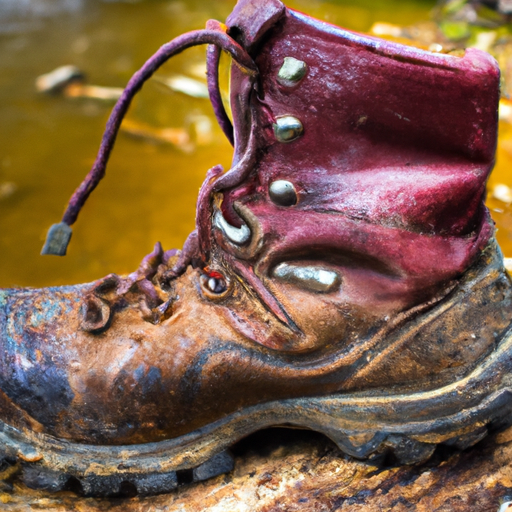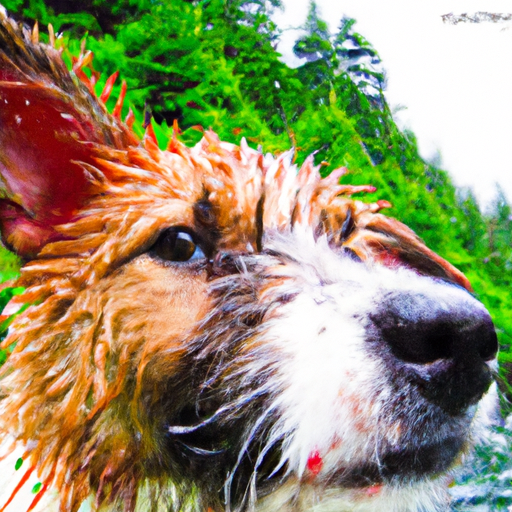Imagine you are out on a nature hike, surrounded by the beauty of the wilderness. Suddenly, you come face to face with a wild animal. What do you do? How do you handle such a situation without jeopardizing your safety or the well-being of the animal? In this article, you will discover some valuable tips and techniques on how to safely handle wildlife encounters. From understanding animal behavior to knowing when and how to back away, these guidelines will empower you to navigate these encounters with confidence and respect. So next time you find yourself in the presence of wildlife, worry not, for you will be equipped with the knowledge to handle it safely.
Understanding Wildlife Behavior
When it comes to understanding wildlife behavior, research is key. By studying the habits and patterns of different species, you can gain valuable insights into their behavior. Learn about their natural instincts, mating rituals, hunting techniques, and territorial behaviors. This knowledge will help you anticipate their actions and avoid dangerous encounters.
Recognizing signs of aggression is another important aspect of understanding wildlife behavior. Animals have various ways of expressing aggression, such as growling, hissing, or displaying their teeth. They may also exhibit body language such as raised fur, flared nostrils, or a rigid posture. It's essential to learn to recognize these signs so you can react appropriately and keep yourself safe.
Understanding body language is equally crucial when encountering wildlife. Animals use their bodies to communicate and convey their intentions. For example, raised tails or ears may indicate curiosity or attention, while lowered heads or flattened ears can signal aggression or fear. By observing and interpreting their body language, you can better understand their state of mind and adjust your actions accordingly.
Preparing for Wildlife Encounters
Before venturing into wildlife-rich environments, it's essential to research and know the environment you'll be exploring. Understand the local ecosystem, the types of wildlife present, and their behavior patterns. This knowledge will help you navigate the surroundings more confidently and make informed decisions in the event of an encounter.
Having appropriate gear is crucial for your safety during wildlife encounters. Depending on the location and the animals you may encounter, consider carrying items such as bear spray, a first aid kit, a whistle, and a sturdy walking stick. These tools can help you ward off potential threats or signal for help if needed.
Informing others about your plans is a responsible and prudent step. Letting someone know where you're going, when you expect to be back, and the intended route can be lifesaving in case of an emergency. Should an encounter with wildlife go awry, others will have a general idea of where to search for you or notify the authorities.
Preventing Wildlife Encounters
Keeping a safe distance is crucial when encountering wildlife. Respect the animal's space and don't approach too closely. A safe distance can vary depending on the species, but a general rule of thumb is to stay at least 100 yards away from large mammals, such as bears or moose. This allows you to observe and appreciate their behavior without intruding on their territory.
Avoiding areas known for wildlife activity can significantly reduce the risk of encounters. Research the specific location you plan to visit and understand if it's a common habitat for potentially dangerous animals. If so, consider altering your plans or taking additional precautions to mitigate the risks.
Properly storing food and garbage is vital to prevent attracting wildlife to your campsite or picnic area. Animals are opportunistic and will scavenge for food if given the chance. Use bear-resistant containers or hang food in bear bags in areas where bears are prevalent. Dispose of garbage in secure containers to deter animals from rummaging through it.
Encountering Large Mammals
Remaining calm and composed is crucial when encountering large mammals. If you suddenly find yourself face-to-face with a bear or moose, it's essential to stay calm and avoid making sudden movements. Animals are more likely to respond aggressively if they perceive you as a threat or if they feel cornered. Remain still and slowly back away, maintaining eye contact without staring directly into their eyes.
Identifying different species is essential for your safety and for understanding their behavior. Research the characteristics, habitats, and behaviors of different mammals such as black bears, grizzly bears, or moose. This knowledge will help you determine the best course of action when encountering a specific species and potentially prevent dangerous situations.
Reacting to bear encounters requires a different approach depending on the species involved. For example, when encountering a black bear, experts advise standing your ground, raising your arms to appear larger, and making loud noises to deter them. On the other hand, if faced with a grizzly bear, it's generally recommended to avoid direct eye contact, back away slowly, and speak in a calm, assertive voice.
Reacting to moose encounters involves maintaining a safe distance and giving the moose plenty of space. If a moose becomes aggressive, display submissive behavior by lowering your head and looking away. Slowly back away and find a safe place to wait until the moose moves on.
Handling Snakes and Reptiles
Identifying venomous species is crucial when dealing with snakes and reptiles. Research the local snake species and learn to recognize venomous snakes by their distinctive features, such as venom fangs, triangular heads, or rattle tails. Knowing which snakes to avoid will significantly reduce the risk of snakebite.
Giving snakes a wide berth is a fundamental rule when encountering them. Snakes are generally more afraid of humans than we are of them, and they prefer to avoid confrontation. If you come across a snake, stay calm, and slowly back away, giving the snake enough space to retreat. Never attempt to handle or provoke a snake, regardless of its species.
What to do if bitten by a venomous snake is crucial knowledge in case of an unfortunate incident. If bitten, it's important to stay calm and seek medical attention immediately. Do not attempt to suck out the venom or use a tourniquet. Instead, immobilize the affected limb, keep it below heart level, and call for emergency assistance.
Approaching Birds and Small Animals
Using binoculars or a camera lens is an excellent way to observe birds and small animals without disturbing them. By magnifying your view from a safe distance, you can appreciate their beauty and behavior up close without causing them any stress.
Respecting nesting areas is essential, especially during breeding seasons. Birds and small animals are particularly protective of their nests and may become aggressive if they perceive a threat. Keep your distance from nesting areas, observe quietly, and avoid disturbing their natural habitat.
Avoiding feeding wildlife is vital to their well-being and your safety. Feeding wild animals disrupts their natural diet and can lead to dependence on humans for food. It also increases the risk of aggressive behavior when animals associate humans with a source of food. Enjoy watching wildlife from a distance and let them find their own food in their natural environment.
Dealing with Marine Wildlife
Interacting with dolphins and seals can be an incredible experience, but it's important to do so responsibly. Keep a safe distance and avoid approaching them too closely. While they may seem friendly, these marine mammals are still wild animals and should be treated with respect.
Encounters with sharks can be intimidating, but they are rare and often misunderstood. If you spot a shark while swimming or diving, remain calm and avoid rapid movements. Slowly and smoothly move towards the shore or boat, maintaining eye contact and watching the shark's movements. In the unlikely event of an attack, aim for the shark's sensitive areas, such as the eyes or gills.
Maintaining a safe distance from marine mammals is crucial for their safety and yours. Marine mammals, such as whales or sea lions, should not be approached within a certain distance specified by local regulations. Getting too close can disrupt their natural behavior and potentially cause stress or harm to the animals. Observe these magnificent creatures from a respectful distance to ensure their well-being.
Handling Insects and Bugs
Preventing insect bites is essential for your comfort and well-being. Wear appropriate clothing, such as long sleeves, pants, and hats, and use insect repellent with DEET or other EPA-approved ingredients. Avoid bright colors, floral patterns, and strong perfumes, as these can attract insects.
Identifying dangerous insects is important when encountering them in the wild. Research the local area to understand the types of insects that may pose a threat, such as ticks carrying Lyme disease or stinging insects like bees or wasps. By recognizing dangerous species, you can take extra precautions when in their habitat.
What to do if stung or bitten varies depending on the insect. In general, it's advisable to remove yourself from the area to avoid further exposure and seek medical attention. Carry a first aid kit with insect bite remedies, such as antihistamines or pain relievers, to alleviate symptoms until professional medical help is available.
Managing Wildlife Encounters in Urban Areas
Securing garbage cans is vital to prevent attracting wildlife to urban areas. Animals, such as raccoons or bears, are opportunistic scavengers and will search for food in easily accessible garbage cans. Use locking mechanisms or bear-proof containers to keep the animals out and reduce the likelihood of human-wildlife conflicts in urban settings.
Ensuring proper removal of food sources is equally important to avoid wildlife encounters in urban areas. Clean up after outdoor meals or picnics, disposing of food scraps in sealed containers. Do not leave pet food outside, as it can also attract wildlife. By removing food sources, you discourage animals from venturing into residential areas.
Contacting local wildlife authorities is advisable if you observe wildlife behaving unusually or if there is a potential threat to public safety. Local wildlife organizations have the knowledge, experience, and resources to handle wildlife encounters in urban areas. They can provide guidance, advice, and assistance in managing these situations effectively.
Seeking Professional Help
Contacting wildlife rescue organizations is crucial when encountering injured or orphaned wildlife. If you come across a wounded animal or a baby animal that appears abandoned, do not attempt to handle or care for it yourself. Instead, contact local wildlife rescue organizations who specialize in rehabilitating and releasing wildlife back into their natural habitat.
Reporting injured or orphaned wildlife to the appropriate authorities is a responsible step. Wildlife professionals can assess the situation, provide medical care if needed, and make informed decisions regarding the animal's wellbeing. Reporting any wildlife encounters ensures that the animals receive the best possible care and increases their chances of survival.
Consulting with wildlife experts is highly recommended if you regularly encounter wildlife or work in environments where wildlife interactions are common. These experts can provide valuable advice, training, and resources to help you safely navigate wildlife encounters. They can also offer insights into local species and behaviors, ensuring you are well-prepared for any situation.
By understanding wildlife behavior, preparing for encounters, and knowing how to react, you can confidently and safely enjoy the wonders of the natural world. Remember to always prioritize the well-being of both yourself and the wildlife around you. With the right knowledge and precautions, wildlife encounters can be exciting, educational, and harmonious experiences.






